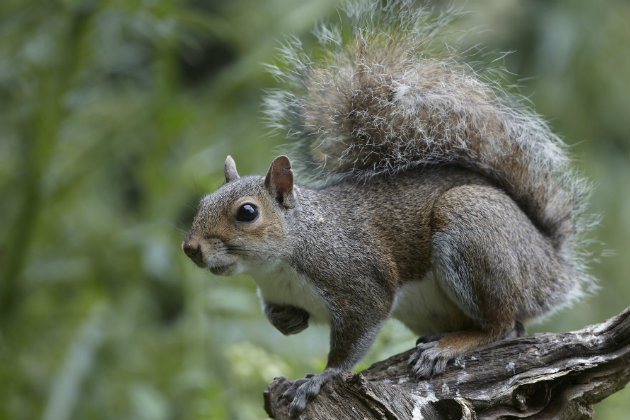Grants to give three legged stool a boost
New payments will cover deer, grey squirrel, and mink management, which is a massive step in the right direction, says Conor O'Gorman.

In January, Steve Barclay, Secretary of State for Detra announced the latest suite of grants available to landowners and farmers in England. Much of it was familiar territory with various habitat management options. But the inclusion of payments for deer, grey squirrel and mink control caught my eye.
For many years we have been lobbying for payments for wildlife management, underpinned by GWCT research. This has included consultation responses and ministerial briefings. Since Brexit, government agencies have been developing new subsidies to support farming right across the UK. In England payments are being rolled out via Environmental Land Management schemes (ELMs).
Vulnerable
Last year there was a hint that some form of wildlife management payments would be included when Detra minister Trudy Harrison said: “The management of predators,
such as foxes and carrion crows. plays an important role in supporting the recovery of some or our most vulnerable species particularly ground nesting birds including the curlew.
“We have recently published an update on Environmental Land Management schemes which confirms that we are exploring how actions to do with managing predatory species- when those species are impacting threatened species recovery – will be made available…”
The news went down well in the shooting press, with talk of the return of fox bounties.
While foxes are not listed in the new grant schemes, I understand that they, along with carrion crow control payments. Are still in the pipeline and lobbying continues.
Meanwhile, payments have been secured for several species-specific payments instead of interest as follows:
Deer: a 10-year grant scheme paying £105 per hectare per annum, to assist with the cost of creating deer management plan, assessing deer damage, and undertaking control.
Grey squirrels: a 10-year grant scheme paying £60 per hectare per annum, to help with the costs of assessing damage from bark-stripping and controlling numbers.
Mink: a 10-year grant scheme paying £99 per 100m of watercourse per annum for control and management with more details to follow when it goes live later this year.
I spoke to Ian Danby, BASC’s head of biodiversity, about the direction of travel and he said: “We worked with Defra last year on the species to include for grant payments and it is positive to see deer, grey squirrels, and mink on the list for this year. There is a really strong case to include fox and corvid species given that one of the priorities for the Environmental Land Management schemes is to ensure the recovery of vulnerable ground-nesting birds such as lowland breeding waders.
“After all, predator control is a vital part of the three-legged stool for successful nature conservation.” he added.
Understorey
Also new on the list are payments tor rhododendron control. over a five-year period at £256 per hectare per annum. This will be an excellent option for shoots wishing to improve their woods by reverting the understorey layer to native species.
Shoots will also be interested in the payments for pollen and nectar flower mix (£729 per hectare per annum). winter bird food on arable and horticultural land (£853 per hectare per annum), woodland edges on arable land (£428 per hectare per annum) and three-zone rides in woodlands (£197 per hectare per annum).
I have only scratched the surface of what is possible with the new grant schemes in England and there is far more information and sources of professional advice available on the BASC website.
Post-Brexit agri-environmental schemes are also being developed in Wales. Scotland and Northern Ireland. We want to see wildlife management grants included in these schemes too and continue to work to that aim.








